- Home
- Mary Burchell
Safe Passage
Safe Passage Read online
Safe Passage
First published as We Followed Our Stars
IDA COOK
Introduction by
ANNE SEBBA
Afterword by
JENNY HADDON
www.mirabooks.co.uk
To my Incomparable Parents without whose
loving and common-sense upbringing we
should never have been capable of doing
the things described in this book.
FOREWORD
Romance is not just about love. It’s about an attitude to life, and there is little more romantic than a profound faith in the possibility of all things.
It could be a belief that when you kiss the ugly toad he will turn into a handsome prince just as much as a conviction that if you do the right thing you can, against all the odds, save a life. What could be more romantic than helping people, strangers, otherwise condemned to likely death, escape their own country and survive in a new one? For Ida and Louise Cook the spirit of hope, the conviction that everything would come all right in the end, was the essence of life. It pervades the romantic novels written by Ida, but it also guided the daily existence of both sisters. No matter what evils they encountered in the world, what remained constant for them was hope.
When I first discovered this remarkable book it was the unshakable faith of Ida and Louise Cook that they could make a difference that hooked me immediately. It was the artless innocence of two young women flying to another country—at a time when f lying itself was dangerously new—defying that country’s laws to help desperate people they did not know, that made such a profound impression. I was moved by the sisters’ certainty, so rare today in a world where moral equivalence holds sway, that they knew without any ambiguity a clear difference between right and wrong.
Ida and Louise Cook were born at the beginning of the last century; Louise, quieter and more intellectual in Dorking, Surrey, in 1901; Ida, naturally garrulous, three years later in 1904 in Sunderland, Northeast England, where their father, a Customs and Excise officer, was posted. Both came to maturity during the harrowing years of World War One, a war that wiped out almost a generation of young men in England. Two ordinary women who lived in extraordinary times.
In the pages that follow there are innumerable examples of their pluck, to use an almost forgotten contemporary word. How Louise would leave her drab civil service office on a Friday evening, dash to Croydon airport for the last plane to Cologne, then the night train to Munich, where they would, with luck (Ida often credits things going right to good luck, too modest to recognize it is hard work instead) arrive for breakfast on Saturday morning. Minor inconveniences such as toothache and overdrafts were ignored. They spent so much of their own money on these rescue missions that Ida admits toward the end of the book that she was in significant debt.
Money was never one of their gods. They made their own clothes, traveled third class and, even when Ida—known as Mary Burchell—became one of Mills & Boon’s bestselling authors earning almost £1,000 a year from her novels, they still sat in the gallery rather than the stalls of their beloved Covent Garden. “We spent thousands in our imagination,” she wrote when her advance for two books was a mere thirty pounds. By the time she was earning thousands, she had other ideas.
The problem they were confronting was that the British government, since the Nazi seizure of power in 1933 when Jews had been gradually stripped of all rights, had allowed very few Jewish refugees to flee to Britain, and then only if financial guarantees for their future stability were in place. The situation deteriorated dramatically in November 1938, following the outburst of violence at Kristallnacht when thousands of Jewish homes and businesses were destroyed and looted. This night of carnage shocked many British people who until then had ignored the plight of the Jews in Germany and Austria. The British government now agreed to ease immigration restrictions for Jewish children, but were still not prepared to allow unlimited entry for adults, many of whom found it impossible to leave. In this crisis private citizens or organizations had to come up with guarantees to pay for each child’s care and education or to provide for an adult, which for a woman, usually meant domestic service. Adult men were accepted only if they had documentary proof that they were in transit and therefore faced the direst problems.
Ida and Louise, partly in order to make financial guarantees easier and because they recognized that those they were rescuing hated the idea of living off charity, offered to smuggle out valuables—mostly jewelry and furs. The refugees could sell these and have something to live on once they arrived in England. But in late 1930s Nazi Germany, smuggling currency or valuables was a serious crime. By helping opponents of the regime, as they did on at least one occasion, they risked their own lives. Yet the only precaution they took was varying their return journey—perhaps coming home through Holland, catching the night boat and arriving at Harwich early on Monday morning so that Louise could walk into her office just in time. Their only weapon was faith in their British passports.
Ida describes their journeys straightforwardly, not enhancing her or her sister’s role with the narrative storyteller’s skills at her disposal. There is no need for added drama. It soon became, she says, a regular and serious pattern of work. Yet who can forget the image of the nervous and eccentric opera-loving sisters, an image they themselves encouraged as a “cover story,” wearing cheap and cheerful clothes, embellished with fine pearls, expensive wristwatches and other jewels. Once, Ida’s jumper was adorned with a particularly huge oblong of blazing diamonds—“someone’s entire capital”—which she had to pass off as fake paste from Woolworth’s.
The smuggling was, she says, “a simple procedure.” But Nazi guards often boarded the train at the frontier for currency inspections. “This made things a bit awkward,” she writes blithely of an experience that for most young women (or men) would be heart-stoppingly fearful. “We both had rather ingenuous faces!” she says by way of explanation. And yet she admits that they started to be known at Cologne airport “and some awkward and unfriendly questions were asked.”
Soon they were doing more—organizing forged documents, traveling the country to raise money and even buying a small London flat for the refugees to live in while they, women in their thirties, continued to live at home with their parents.
But if fear was a forbidden emotion, sympathy and pain certainly were not. Neither sister was ashamed to shed tears, mostly at the agonizing knowledge of the many they could not save and the likely suicides that would result.
In order to demonstrate their lack of fear, they chose deliberately to stay in the big luxury hotels—the Adlon or the Vier Jahreszeiten, where the Nazi chiefs stayed—wearing the borrowed furs with English labels freshly sewn in that they were taking back to England. “Then, if you stood and gazed at them admiringly as they went through the lobby, no one thought you were anything but another couple of admiring fools. That was why we knew them all by sight, Louise and I…Goering, Goebbels, Himmler, Streicher, Ribbentrop. We even knew Hitler from the back.” Not only does Ida make light of their courage, she also self-deprecatingly describes her behavior as “ignorant.”
“We didn’t know—imagine!—in those days we didn’t know that to be Jewish and to come from Frankfurt-am-Main in Germany…had the seeds of tragedy in it.” This was when their first case, Frau Mitia Meyer-Lissman, the official Salzburg lecturer, was entrusted to their care. Thanks to her they soon “saw things more clearly and understood the full horror of what was happening in Germany.”
The sisters were in Salzburg in 1934 when Dollfuss, the Austrian chancellor, was assassinated in a bungled Nazi coup attempt. “I blush now to think how ignorant we were of the significance of this event…we were concerned with only one aspect of the mu
rder: would it put a stop to our holiday?” Ida wrote in 1950. But in fact no music lover that summer could have avoided the sense of menace, the atmosphere of doomed enchantment that hung over the festival. And right in the centre of this maelstrom was the charismatic and controversial Austrian conductor, Clemens Krauss.
Krauss is the enormous and looming shadow that stalks the book. An elegant, sometimes dictatorial conductor, Krauss was by virtue of his friendship with Richard Strauss a direct link to the source of musical creation. Director of the Vienna State Opera and later the Berlin State Opera, Krauss was ambitious to revive the musical life of Salzburg, and he set audiences alight with fervor. He and his glamorous wife, the Romanian soprano Viorica Ursuleac, had what today would be called A-list celebrity status, and Ida and Louise were, unquestionably, star struck.
It was only because of Clemens Krauss and his wife that Ida and Louise started their rescue work, which they could, or would, never have maintained without the constant encouragement and help of those two. His offer to stage favorite operas chosen by Ida and Louise gave added authenticity to their story if questioned by Nazi guards on their travels. But it also took them right to the heart of their earthly pleasures and dreams. Ida is honest enough to recognize that, although it was the pursuit of opera that initially brought them to the refugee work, it was now the pursuit of the refugee work that was made possible only by the support of the great operatic performances. She insists that it was the same naïve technique by which they first learned to save up enough money to visit the United States and meet famous opera singers in the 1920s that helped them now as they “stumbled” into Europe and began to save lives. “You never know what you can do until you refuse to take no for an answer,” Ida wrote.
But naïve, with its connotations of foolish ignorance, is not a word that fits Ida or Louise. Ida was too intelligent not to realize, when she came to write her account of those years, that Krauss, who had had to defend himself to a de-Nazification tribunal after the war, was tainted by default. She writes of him: “I know that to speak in praise of any artist who occupied a high position in Hitler’s Germany is to tread on very delicate ground. At the first word, even now, tempers rise, private and professional axes are taken out and reground and friendships tremble in the balance. But, in that homeliest of phrases, one must speak as one finds.”
Hindsight is easily acquired, and if Ida and Louise had been ignorant in 1934 they were unusually farsighted two or three years later. In the appeasement debate that raged around Britain in the thirties, many of those who thought that the only way to prevent Hitler was to fight him, were accused, like Winston Churchill, of warmongering. Others, such as Prime Minister Neville Chamberlain, believed Hitler was a man who could offer Britons “peace with honor.”
A number of so called intellectuals in Britain in the 1930s—not just those who were openly anti-Semitic or pro-Hitler such as Unity Mitford, but those who worshipped German art and culture—refused to believe ill of Hitler or a country that had produced Beethoven, Goethe and Wagner. The popular historian Arthur Bryant, for example, could write in 1937 of German fascists as “peaceable and ordinary folk” fighting for decency, tradition and civilization and, even after Kristallnacht, said of Jews that they had “seldom been welcome guests and scarcely ever for long.” He argued that they should not be welcome in Britain because they were likely to take “an unfair and disproportionate amount of wealth and power.”
Yet Ida and Louise, with no university degrees, were not fooled. They were able to distinguish between high art and fine music and bestiality. They understood that Anglo-German friendship did not require conniving with Hitler to kill Jews. They were born with an innate moral gauge, a spirit level in the brain that tilted as soon as they smelled evil. Courage they learned along the way.
Ida credits her parents, James and Mary Cook, as the source of this courage. “Both parents set a standard of personal integrity that gave us children a never-questioned scale of values and made life so much easier later on,” she wrote. One of the most appealing scenes of domestic tranquillity has Ida describing how they had returned from a particularly harrowing time. “I went straight through into the kitchen where Mother was making pastry—which is after all one of the basic things of life.… If she had stopped and made a sentimental fuss of me I would have cried for hours. She just simply went on making pastry…she told me ‘you’re doing the best you can. Now tell me all about it.’” Such simple pleasures are hard to grasp in this postfeminist world. But from them derived the strength that allowed Ida and Louise not only to accept so unquestioningly the single life that was their lot, but also their duty (another old-fashioned word) toward others.
And through it all is the music. Opera shored up their belief “that there was another world to which we would be able to return one day. Beyond the fog of horror and misery there were lovely bright things that they had once taken for granted.” Ida recognized the absurdity of sublime music existing in the midst of a hellhole. But she saw it rather differently. She saw the music as something that counterbalanced their unhappiness at the cruelty they were forced to witness. She refers at one point to the power they had to decide the fate of an individual, power she loathed because of the “terrible, moving and overwhelming thought—I could save life with it.” But the real power in the book is the transformative nature of music and especially the high drama of operatic music. These two spinster sisters knew that in the presence of their prima donna heroines, or angels according to Ida, they could pull on their homemade cloaks and assume different personae themselves.
Now, that’s romance.
After the war Ida and Louise settled back into the family home in south London where they had lived for the past sixty years and into the safe and familiar routines of work and opera, continuing quietly with their refugee and displaced persons work. But in 1950, after Ida published this autobiography (under the title We Followed Our Stars), the pair were soon bathed in a halo of publicity and embarked on a round of parties and awards. Several of the refugees fought to have Ida and Louise’s work recognized by Yad Vashem, the Israeli authority that honors those who helped save lives during the Nazi period. In 1965 they were declared “Righteous among the Nations” in recognition of their work in rescuing Jews from Germany and from Austria during the dark days of the Nazi regime and in helping them to rebuild their lives in freedom. The citation mentioned twenty-nine families, but the total number of those they helped must be triple this, not all of whom were Jewish.
They never went to Israel, receiving the certificate instead from the Israeli ambassador in London. In 1965 they were two among only four Britons to be so honored.
Ida, the talkative one, was the sister to whom journalists addressed questions and whose fame as a novelist attracted attention. But she was always insistent that whatever honor was granted, it must be for both of them. As she never tired of pointing out, it was Louise who embarked on learning German in order to conduct the interviews. But there was something much deeper. They were dependent on each other. Feted though they now were, especially in America, which had become home for some of those they rescued, their lives remained essentially unvaried until the end. Ida continued to produce romance fiction for Mills & Boon and one work of nonfiction (1979), a ghosted autobiography of the singer Tito Gobbi, her close friend. But her heroines belonged to an earlier world. Her publisher, Alan Boon, commented, “Mary Burchell [Ida’s pen name] wasn’t sexy, but she showed an awareness of it…it was a pretended form of sex, not suggestive in any way at all. It was instinct, not participating.”
Neither sister married, but that does not mean they didn’t have romantic lives. They lived vicariously through their music, through their work or through their refugees. Ida was never ashamed of believing in romance or of writing romantic novels. When she took over as president of the Romantic Novelists’ Association in 1966 she declared, “Romance is the quality which gives an air of probability to our dearest wishes.…people often say lif
e isn’t like that, but life is often exactly like that. Illusions and dreams often do come true.”
Ida died on December 24, 1986, at the age of eighty-two. Louise outlived her beloved sister by another five years. After Ida’s death she moved to live in the London flat which had been bought for the refugees before the war. Obituaries talked of the sisters’ “Scarlet Pimpernel” operation. One of those refugees who wrote to Yad Vashem in Jerusalem in support of their cause described them as “human pillars.” Ida said simply, “We called ourselves Christian and we tried to do our best.”
Anne Sebba
London
March 2008
Anne Sebba is a biographer, journalist and former Reuters foreign correspondent. She is the author, most recently, of Jennie Churchill: Winston’s American Mother.
1
To every writer who has ever published a book, there comes eventually that amusing though irritating moment when someone says pensively, “I have always thought that I could write a book—if only I had time.”
I have never been able to decide whether the subtle implication is that only those with an unfair amount of time at their disposal ever reach the point of seeing themselves in print, or whether it is a delicate way of saying that in order to write a book one must have neglected more pressing duties.
In my own experience, I can only say that I have never sat down to write a book with the feeling that I had any time in hand. And, apart from the fact that I write, happily and unashamedly, for the wicked old profit motive, any urge I may have has nothing whatever to do with the question of whether I have time or not.
But for some while now, I have had a sneaking sympathy for the “if I had time” school of thought, for this is the book that I have thought I should like to write—if only I had time.

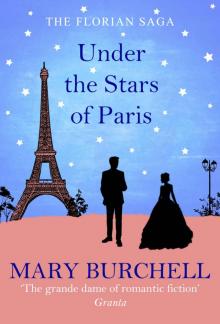 Under the Stars of Paris
Under the Stars of Paris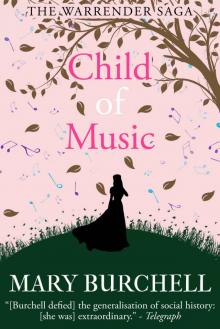 Child of Music (Warrender Saga Book 5)
Child of Music (Warrender Saga Book 5) Song Cycle (Warrender Saga Book 8)
Song Cycle (Warrender Saga Book 8)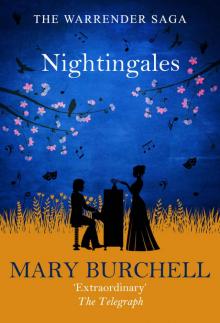 Nightingales (Warrender Saga Book 11)
Nightingales (Warrender Saga Book 11) The Curtain Rises (Warrender Saga Book 4)
The Curtain Rises (Warrender Saga Book 4)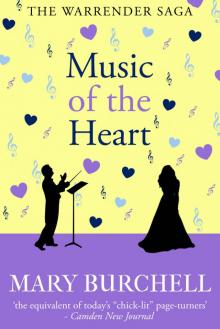 Music of the Heart (Warrender Saga Book 6)
Music of the Heart (Warrender Saga Book 6)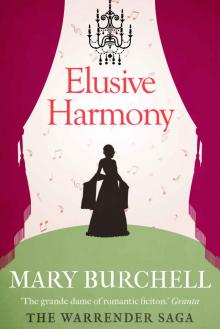 Elusive Harmony (The Warrender Saga Book 10)
Elusive Harmony (The Warrender Saga Book 10) When Love Is Blind (Warrender Saga Book 3)
When Love Is Blind (Warrender Saga Book 3)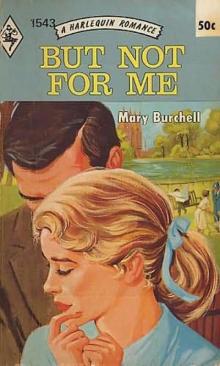 But Not For Me
But Not For Me Love Him or Leave Him
Love Him or Leave Him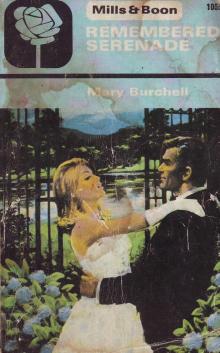 A Remembered Serenade
A Remembered Serenade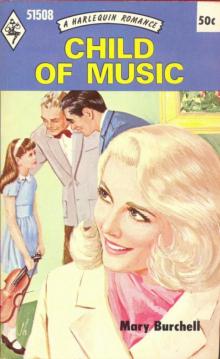 Child Of Music
Child Of Music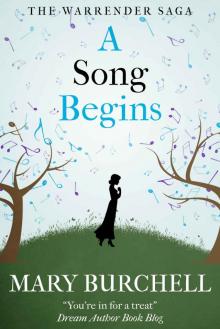 A Song Begins (Warrender Saga Book 1)
A Song Begins (Warrender Saga Book 1)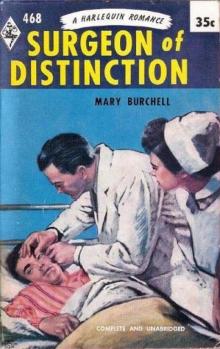 Surgeon of Distinction
Surgeon of Distinction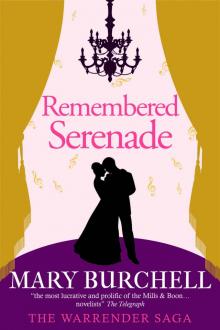 Remembered Serenade (Warrender Saga Book 9)
Remembered Serenade (Warrender Saga Book 9)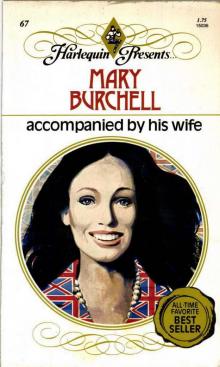 Accompanied by His Wife
Accompanied by His Wife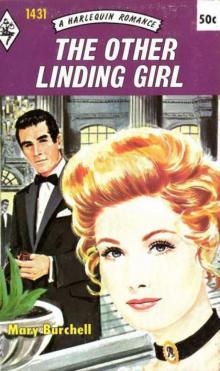 The Other Linding Girl
The Other Linding Girl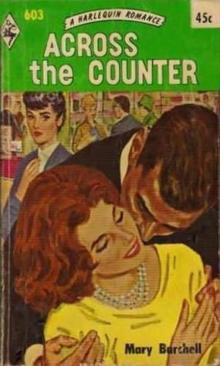 Across the Counter
Across the Counter The Curtain Rises
The Curtain Rises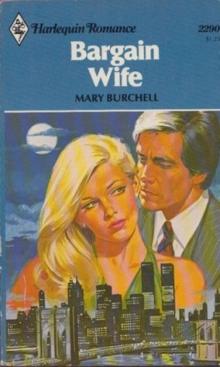 Bargain Wife
Bargain Wife Music of the Heart (The Warrender Saga No. 6)
Music of the Heart (The Warrender Saga No. 6)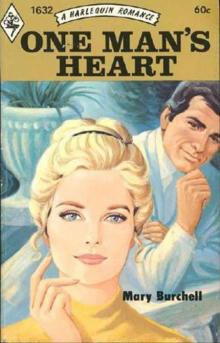 One Man's Heart
One Man's Heart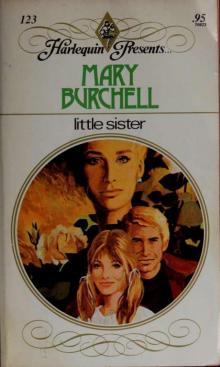 Little sister
Little sister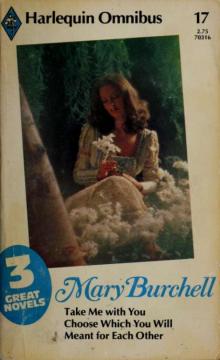 Harlequin Omnibus: Take Me with You, Choose What You Will, Meant for Each Other
Harlequin Omnibus: Take Me with You, Choose What You Will, Meant for Each Other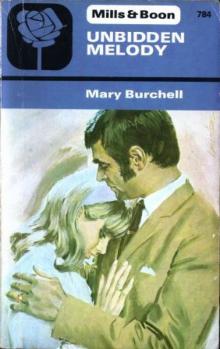 Unbidden Melody
Unbidden Melody Safe Passage
Safe Passage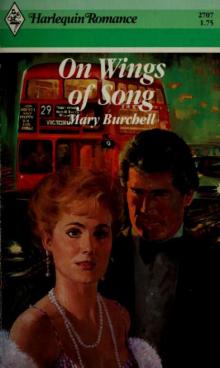 Warrender 13: On Wings of Song
Warrender 13: On Wings of Song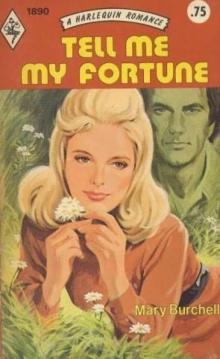 Tell Me my Forture
Tell Me my Forture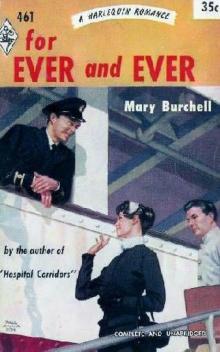 For Ever and Ever
For Ever and Ever My Sister Celia
My Sister Celia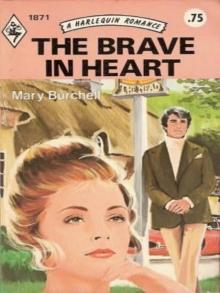 The Brave In Heart
The Brave In Heart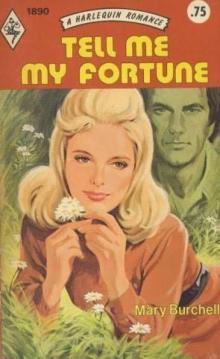 Tell Me My Fortune
Tell Me My Fortune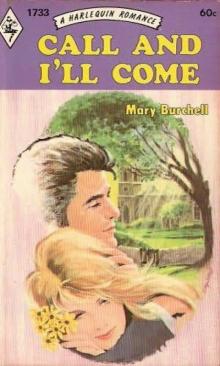 Call and I'll Come
Call and I'll Come Honey
Honey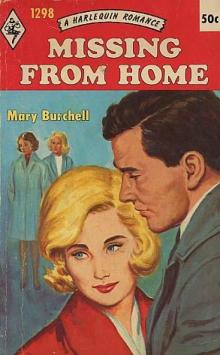 Missing From Home
Missing From Home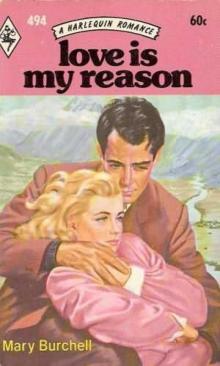 Love Is My Reason
Love Is My Reason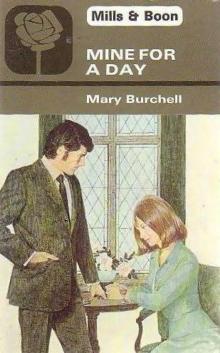 Mine for a Day
Mine for a Day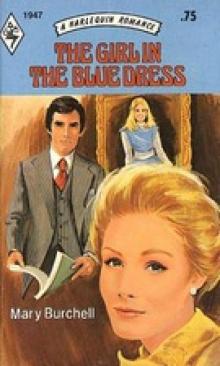 The girl in the blue dress
The girl in the blue dress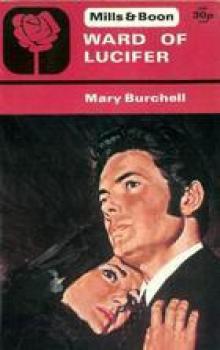 Ward of Lucifer
Ward of Lucifer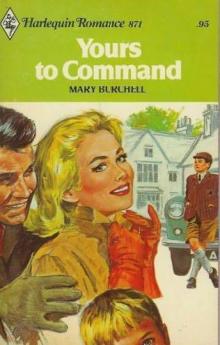 Yours to Command
Yours to Command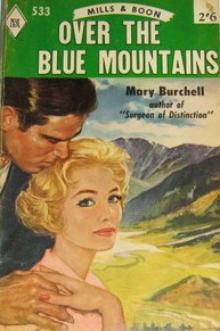 Over the Blue Mountains
Over the Blue Mountains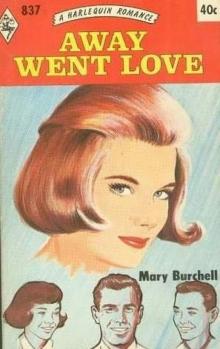 Away Went Love
Away Went Love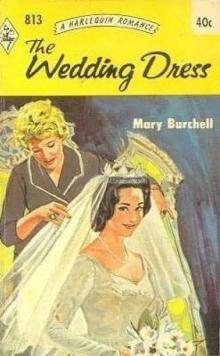 The Wedding Dress
The Wedding Dress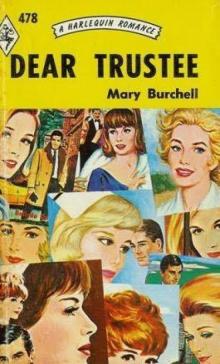 Dear Trustee
Dear Trustee When Love Is Blind
When Love Is Blind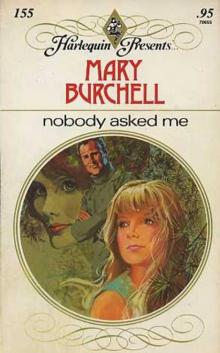 Nobody Asked Me
Nobody Asked Me